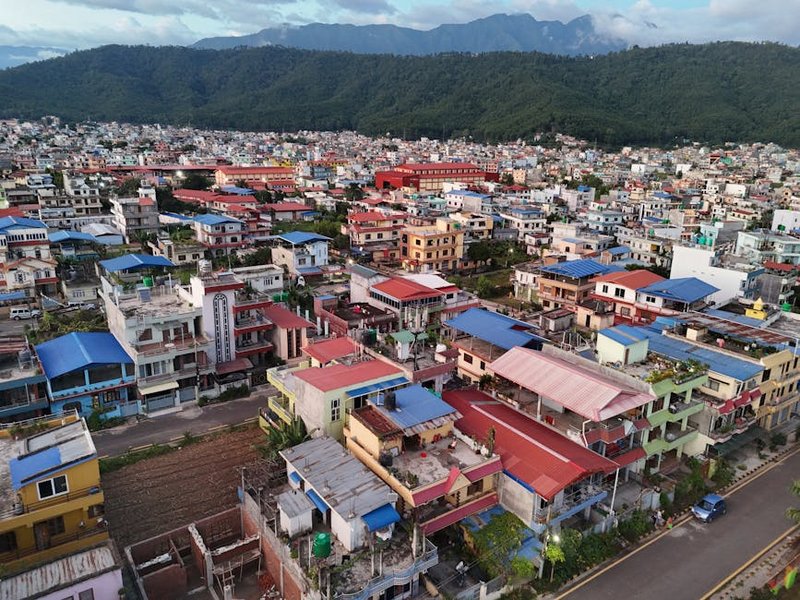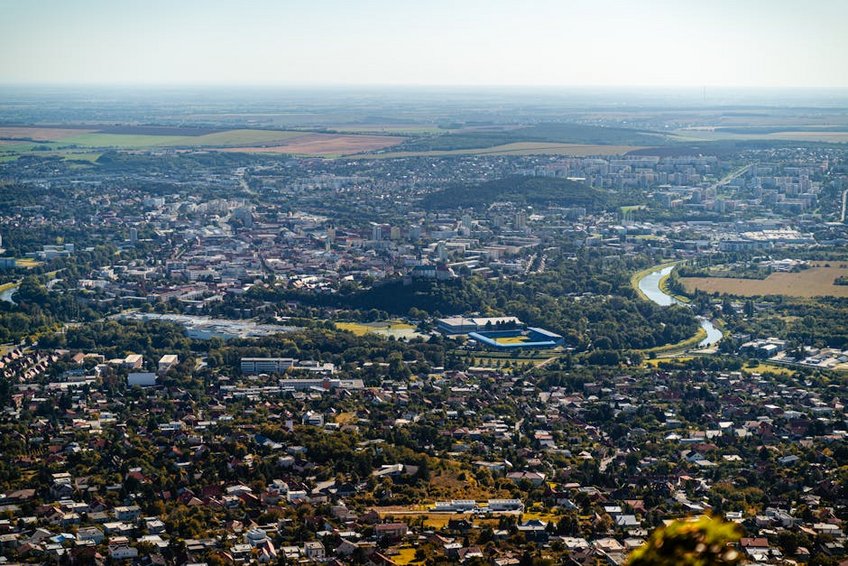Drone Landscape Photography
Drone landscape photography has revolutionized how we capture and experience the natural world from breathtaking aerial perspectives. As someone who has spent years exploring remote locations and capturing stunning vistas, I can confidently say that drone photography opens up creative possibilities that were once only available to professional filmmakers with helicopter budgets. Whether you’re an amateur photographer looking to expand your skills or a seasoned professional seeking new angles, drone landscape photography offers unparalleled opportunities to create jaw-dropping images that tell compelling visual stories. The combination of advanced technology and artistic vision allows you to capture sweeping mountain ranges, dramatic coastlines, and patterns in nature that are invisible from ground level. This comprehensive guide will walk you through everything you need to know about mastering drone landscape photography, from equipment selection to advanced flying techniques and post-processing secrets that will make your aerial images stand out.
Drone Landscape Photography Essential Information
Understanding the fundamentals of drone landscape photography is crucial before you take to the skies. Modern drone technology has made aerial photography accessible to everyone, but there’s more to creating stunning images than simply flying and pressing a button. The best drone photographers combine technical knowledge with artistic vision, understanding how light, weather conditions, and composition work together from an aerial perspective. Unlike traditional landscape photography where you work with established vantage points, drone photography requires you to constantly think in three dimensions, considering altitude, angle, and movement to create compelling compositions. The learning curve might seem steep initially, but with practice and the right guidance, you’ll quickly develop the skills needed to capture professional-quality aerial landscapes that will amaze your audience and elevate your photography portfolio.
Essential Equipment – What You Need to Know
- Drone with camera capabilities (DJI models are industry standard for beginners and professionals)
- Multiple batteries (3-4 recommended for extended shooting sessions)
- ND filters for controlling exposure in bright conditions
- Tablet or smartphone with bright display for real-time composition
- Portable landing pad for takeoff/landing in uneven terrain
- Entry-level setup: DJI Mini series drone + basic accessories – $500-800 USD
- Mid-range professional: DJI Air series + multiple batteries/filters – $1,200-1,800 USD
- High-end professional: DJI Mavic Pro series + full accessory kit – $2,500-3,500 USD
- Federal Aviation Administration Drone Information
- DJI Official Website for Equipment Specifications
Key Technical Details – Camera Settings and Specifications
Mastering your drone’s camera settings is essential for capturing professional landscape photographs. Most modern drones offer manual camera controls that allow you to adjust ISO, shutter speed, and aperture (on models with variable aperture). For landscape photography, you’ll typically want to use the lowest possible ISO (usually 100) to maintain image quality and reduce noise. Shutter speed will depend on lighting conditions and whether you’re capturing still images or video—for stills, you might use slower shutter speeds with ND filters, while video requires specific frame rates. Shooting in RAW format is non-negotiable for serious landscape photographers as it preserves maximum image data for post-processing. Understanding these technical aspects will significantly improve your results and give you creative control over your final images.

Drone Landscape Photography Planning Your Trip
Successful drone landscape photography requires meticulous planning and preparation. Unlike spontaneous ground photography, aerial sessions demand careful consideration of weather conditions, flight regulations, location accessibility, and timing for optimal lighting. I always start by researching potential locations using satellite imagery apps like Google Earth to identify interesting patterns, textures, and compositions from above. Checking weather forecasts is crucial—you’ll want clear skies for visibility but also interesting cloud formations for dramatic effects. Understanding golden hour and blue hour timing is even more important for drone photography than traditional landscape work because changing light conditions affect the entire scene uniformly from above. Planning your battery usage and having backup power sources ensures you don’t miss critical shooting opportunities when conditions are perfect. Proper planning separates amateur drone photographers from professionals who consistently capture stunning images.
Best Time to Visit Locations for Drone Photography
The ideal time for drone landscape photography varies by location and desired effect. Generally, sunrise and sunset (golden hours) provide the most dramatic lighting with long shadows and warm tones that enhance landscape features. However, some locations benefit from different timing—coastal areas might be best at low tide to reveal patterns in the sand, while mountain locations might require midday shooting to avoid valley shadows. Seasonal considerations are crucial; autumn offers vibrant foliage colors, winter provides snow patterns, spring brings blooming landscapes, and summer offers long shooting hours. Research your specific location’s optimal conditions and consider visiting during shoulder seasons when crowds are thinner and light angles are more favorable for aerial photography.
Budget Planning and Costs
Essential Preparation Checklist
Before any drone photography expedition, thorough preparation ensures both great results and compliance with regulations. Always check local drone laws and restricted airspace using apps like B4UFLY or Kittyhawk. Pack extra memory cards formatted and empty, multiple fully charged batteries, lens cleaning equipment, and necessary permits if shooting in national parks or protected areas. Weather-checking should include wind conditions aloft—what feels calm on the ground might be windy at altitude. Tell someone your flight plans and expected return time, especially when shooting in remote locations. Finally, mentally prepare your shot list but remain flexible to adapt to changing conditions and unexpected opportunities that often create the most memorable images.
Drone Landscape Photography Top Techniques and Approaches
Mastering various drone photography techniques will dramatically improve your aerial landscape images. Unlike traditional photography where you’re limited to fixed perspectives, drones allow dynamic movement and unique angles that can make ordinary landscapes extraordinary. The “orbit” technique circles around a subject creating dramatic reveals, while the “reveal” shot starts close to an object then pulls back to show context. “Top-down” or “nadir” shots looking straight down create abstract patterns from natural features, while “low-angle” flights just above tree level or water surface provide intimate perspectives. Combining vertical movement with horizontal panning creates cinematic shots that ground-based photographers can only dream of capturing. Experimenting with these techniques in different lighting conditions and landscapes will develop your unique aerial photography style and significantly enhance your portfolio.
Must-Try Composition Techniques
Applying strong composition principles is even more critical in drone landscape photography where the entire scene is visible. The rule of thirds remains fundamental—position horizon lines either in the top or bottom third of the frame depending on whether sky or land is more interesting. Leading lines work exceptionally well from above—roads, rivers, and shorelines naturally guide the viewer’s eye through the image. Patterns and textures visible only from altitude create compelling abstract compositions. Foreground interest remains important even in aerial shots; including a interesting rock formation, tree, or structure in the foreground adds depth and scale. Finally, don’t forget to vary your altitude—sometimes higher isn’t better, and low-level shots can create more intimate and dramatic perspectives than extreme high-altitude images.
Advanced Flying Techniques for Unique Shots
Beyond basic hovering and straight-line flying, advanced drone maneuvers can create stunning landscape images that stand out. The “dolly zoom” effect (popularized in films like Vertigo) involves flying toward or away from a subject while simultaneously zooming the opposite direction, creating dramatic perspective distortion. “Point of interest” mode automatically orbits subjects while keeping them centered, perfect for capturing mountain peaks or isolated structures. “Tripod mode” on many drones provides ultra-smooth movement for cinematic video shots. For still photography, mastering hover stability is crucial for sharp images, especially in windy conditions. Practice these techniques in open areas before attempting them in challenging landscapes, and always maintain visual line of sight with your drone while executing complex maneuvers.
Drone Landscape Photography Practical Travel Information
Traveling with drone equipment requires special considerations to ensure both gear safety and regulatory compliance. When flying commercially, always carry your FAA Part 107 certification (US) or equivalent credentials in other countries. Research drone laws for each destination—some countries have outright bans, while others require registration or permits. Pack your drone in carry-on luggage with batteries properly stored in fireproof bags—most airlines prohibit lithium batteries in checked baggage. Consider weight and space when choosing accessories; a compact kit with essential filters and spare props often serves better than bringing everything you own. When shooting in remote locations, portable power banks can recharge controller and monitoring devices, while solar chargers can extend your shooting time significantly when away from power sources.
| Transportation Type | Drone Considerations | Additional Costs (USD) |
|---|---|---|
| Commercial Airlines | Carry-on only, battery restrictions, possible additional screening | $0-50 extra baggage fees |
| Road Trips | Secure storage, temperature control, charging solutions | $100-200 for power inverters/chargers |
| Hiking/Backcountry | Weight distribution, weather protection, portable power | $150-300 for lightweight solar solutions |


